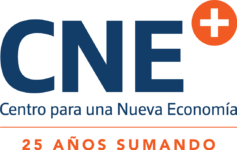
Published on May 22, 2024 / Leer en español
In This Issue
In late March the U.S. Department of Energy (“DOE”) released the final report of its study of Puerto Rico’s electric grid and its options for implementing a transition to 100% renewable generation by 2050. The final report entitled Puerto Rico Grid Resilience and Transitions to 100% Renewable Energy Study (“PR100 Study”) is (1) the product of a two-year effort carried out by several of the National Laboratories in conjunction with a broad group of Puerto Rican stakeholders; (2) a comprehensive diagnostic of Puerto Rico’s electric system; and (3) a wide-ranging analysis of the challenges to attain the goal of using only renewable energy sources for the generation of electricity in Puerto Rico.
We reviewed a summary of the main findings of the PR100 Study in a prior CNE Review. This time around we want to focus on a handful of issues that we believe merit further public discussion and analysis in Puerto Rico. Specifically, we will highlight (1) the complexity of achieving the 100% goal; (2) the need to make difficult tradeoffs and hard policy decisions to execute the transition; (3) the cost of the investments required to achieve this undertaking; (4) the economic impact of this process; and (5) some risks and uncertainties that remain to be addressed.
Insights + Analysis from CNE

By Sergio M. Marxuach, Policy Director
Five years ago, Puerto Rico enacted legislation setting the ambitious goal of generating 100% of its electricity from renewable sources by 2050 even as it rebuilt its electric grid, which was devastated by Hurricane María in 2017. This is a clear and compelling objective that is worth pursuing. Yet success is not guaranteed because it is also incredibly complicated. The policy questions require analyzing theoretical, technical, and economic constraints as well as making difficult tradeoffs among and between complex economic, technical, and social objectives. In addition, the technology is still evolving. In that sense, there is a tension between the technology that is already available now and the technology that is not yet viable or commercially available.
We also need to note that the transition to 100% renewable generation has a political economy dimension, as the old technology (and those who benefitted from it) is replaced by a still evolving new one (and those who stand to gain from it). Humanity’s natural resistance to change is thus reinforced by powerful economic and financial incentives.
Furthermore, during the last five years, Puerto Rico has fallen behind schedule to meet the interim objective of 40% renewable generation by 2025 due to bureaucratic and coordination failures. We are, therefore, at a critical juncture. We still have time to rebuild our electric grid and to completely switch away from fossil fuel generation by 2050. But achieving those objectives will require strategic thinking, skilled policymaking, competent execution, tactical dexterity, the ability to act collectively over the long term, and inspired leadership—resources that have been in short supply in Puerto Rico for at least a generation. Make no mistake, this endeavor will be challenging, hard, and expensive. There will be setbacks along the way. But it is the right thing for Puerto Rico to do for the generations yet to be born. So, we better get working if we are going to make it.
Before moving on with our analysis, we note that the PR100 Study’s final report is over 800 pages long. Unfortunately, a full analysis of such a comprehensive document is well beyond the scope of this monthly newsletter. We do encourage all interested parties to take a look at the document, which has been translated into Spanish, in case they want to obtain a more detailed analysis of any issue related to the transition to 100% renewable generation.
Section 1: It’s Complicated
Sometimes in the heat of public debate, it is easy to overlook the complexity of the process Puerto Rico is undertaking as it moves towards 100% renewable generation. This is a multi-year, multi-billion dollar process, with many moving parts. Meticulous resource, technical, and economic assessments need to be made, even as the technology itself is evolving. The Puerto Rico Electric Power Authority (“PREPA”), the legacy utility that still owns both the grid and a substantial fleet of fossil fuel generation, is currently undergoing a bankruptcy-like process to restructure its financial obligations. Several old-generation plants need to be decommissioned as renewable generation and large-scale battery storage systems have to be installed and interconnected to the grid. In addition, two new players, LUMA and Genera, are currently managing and operating the electric system, while the regulatory framework is relatively new and the main regulator, the Puerto Rico Energy Bureau, has only been in existence for ten years.
Click here to read more on the following issues:
- Priority Number One: Stabilize the Grid
- Too Many Cooks in the Kitchen
- There is More than One Pathway to 100% Renewable Generation
Section 2: There Are Tradeoffs
As could be expected in a project as complicated as this one, there are multiple tradeoffs involved. Sometimes those tradeoffs are explicit, while others are implicit or ambiguous.
In Chapter 12 of the PR100 Final Report, the DOE compared and contrasted different scenarios to better understand the tradeoffs among and between them.
Click here to learn more about these tradeoffs and:
- The Impact of Lower Retail Sales
- The Impact of Different Levels of Distributed Solar PV
Section 3: It’s Expensive
The DOE did not perform an independent analysis of the costs required to bring the electric system “back into a state of good repair, but rather rel[ied] on the FOMB’s 2023 Certified Fiscal Plan for PREPA to identify both the level of investment and the sources of funds to cover that level investment.” (PR100 Final Report, p. 407) According to the DOE analysis, recovery-related investments total $15.441 billion, which includes spending on generation, transmission, and distribution system repairs and replacements, as well as on the Tranche 1 transmission network upgrades.
Notice that the $15.441 billion amount does not include the capital investment necessary to fund new generation as well as the upgrades and extensions of the transmission and distribution (“T&D”) system required to achieve the 100% goal by 2050 (with the exception of the Tranche 1 transmission system upgrade). One independent expert estimated additional T&D capital investments between 2030 and 2035 would add up to an additional $13.6 billion. (London Economics International, Critique of Government Parties’ Assertion that the 9019 Settlement Will Not Affect Non-settling Creditors and Would Avoid a Subsequent Title III Filing by PREPA, October 30, 2019, p. 97, Document #: 1890-1) Keep that in mind as we focus on the resources identified by the DOE to finance the recovery-related investments.
Click here to read more on this topic.
Section 4: Is it Good for the Economy?
The economic impact of the transition to 100% renewable generation, as modeled by the DOE, exhibits several tradeoffs that policymakers will need to take into account: (1) between construction and maintenance jobs; (2) among and between the costs and benefits of the different technologies; and (3) between short-term losses and long-term benefits in terms of employment and household income.
Section 5: Risks and Uncertainties
Any process as complicated as the transition to 100% renewable generation will be full of risks and uncertainties. In this section, we highlight some of the most significant in our opinion.
- The Challenge of Stabilizing the System
- Coordination Problems
- Cost/Resiliency/Reliability Tradeoffs
- Compensation for Net Energy Metering
- Policy and Regulatory Constraints Regarding the Contribution of Distributed PV to Achieve the Renewable Portfolio Standards (“RPS”) Goals
- Reaching 40% RPS by 2025 Appears Unfeasible
- Obtaining Funding for the Grid Upgrade Remains Challenging
- PREPA’s Access to Capital Markets
- Uncertainty Regarding Energy Efficiency Measures and Electric Vehicles
- Risk of Grid Defection/Death Spiral
On Our Radar…
Click the image above to learn more about our upcoming event in Madrid, Spain.

